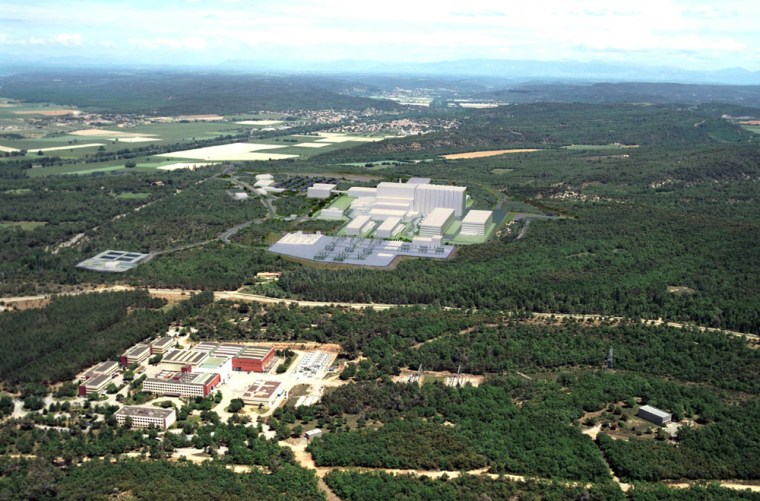Six partners, the United States among them, have chosen France as the site for a $13 billion experimental nuclear fusion reactor that, if successful, would open the door to cleaner and abundant energy, the partners announced Tuesday.
The International Thermonuclear Experimental Reactor, or ITER, is intended to show that nuclear fusion, which harnesses the same energy that heats the sun to generate electricity, can wean the world off pollution-producing fossil fuels. Nuclear fusion also produces no greenhouse gas emissions, which many scientists tie to global warming, and only low levels of radioactive waste.
The project is funded by Japan, the United States, South Korea, Russia, China and the European Union, but the six parties had been divided over where to put the test reactor, which would fuse atomic nuclei at extremely high temperatures inside a giant electromagnetic ring.
Competition was intense. At stake are billions of dollars worth of research funding, construction and engineering contracts, and the creation of thousands of jobs.
Fusion, not fission
Unlike fission reactors used in existing nuclear power stations, which release energy by splitting atoms apart, ITER would generate energy by fusing hydrogen atoms extracted from seawater.

Japan, the United States and South Korea wanted the facility built in Japan. Russia, China and the European Union wanted it at Cadarache, in southern France.
“Today we are making history in terms of international scientific cooperation,” the EU’s Science and Research Commissioner Janez Potocnik said in a statement. The decision was made in Moscow at a closed-door meeting of the consortium.
The EU site in France had been seen as the front-runner, and Japanese newspaper reports had said Tokyo was prepared to give up hosting the project in return for a bigger research and operations role in the project.
Concerns and challenges
Some scientists have warned that Cadarache could be prone to earth tremors, a view discounted by France's government.
And opponents note that the project, which will take 10 years to build, is only experimental and that it would be at least 50 years before a commercially viable reactor is built.
Greenpeace, for one, stated that “at a time when it is universally recognized that we must reduce greenhouse gas emissions by 2050, Greenpeace considers it ridiculous to use resources and billions of euros on this project.”
Some also contend that fusion fuel is neither clean nor safe, although they acknowledge it would be a safer energy source than nuclear fission.
The project also faces challenges like trying to build a reactor that can sustain temperatures of about 180 million degrees Fahrenheit for long enough to generate power.
“I give it a 50:50 chance of success but the engineering is very difficult,” said Ian Fells of Britain’s Royal Academy of Engineering. “If we can really make this work there will be enough electricity to last the world for the next 1,000 to 2,000 years.”
No plutonium, some radioactivity
ITER would have an advantage over current nuclear reactors because it would be cleaner. It would not rely on enriched uranium fuel and it would not produce plutonium, which is a concern from a terrorism point of view.
Fusion reactors would, however, still pose some radiation danger. "In the course of the reaction it produces a lot of neutrons and they get into the actual fabric of the machine and over years it becomes radioactive, so there is still a problem of decommissioning,” said Fells.
“The technology of this is the science of the hydrogen bomb,” Fells added. “You take a couple of hydrogen atoms and you squeeze them together, you fuse them together, and they turn into an atom of helium and produce a great burp of energy.”
Scientists know it could work because they know the hydrogen bomb works. But the problem they face is trying to do it in a controlled manner so the heat can be used to generate electricity.
The hydrogen atom used is deuterium, which is a stable isotope of hydrogen. “The oceans are absolutely stuffed full of it,” said Fells.
Cold War origins
The idea of a nuclear fusion reactor was floated by the then Soviet Union in 1985 as a showpiece for international cooperation during the Cold War. Decades of research, however, have yet to produce a commercially viable fusion reactor.
France has been a big producer of nuclear energy since the oil shocks of the 1970s and has 58 nuclear reactors, the most in the world after the United States.
The United States, a founding member of the ITER, pulled out in 1998 and re-entered in 2003.
